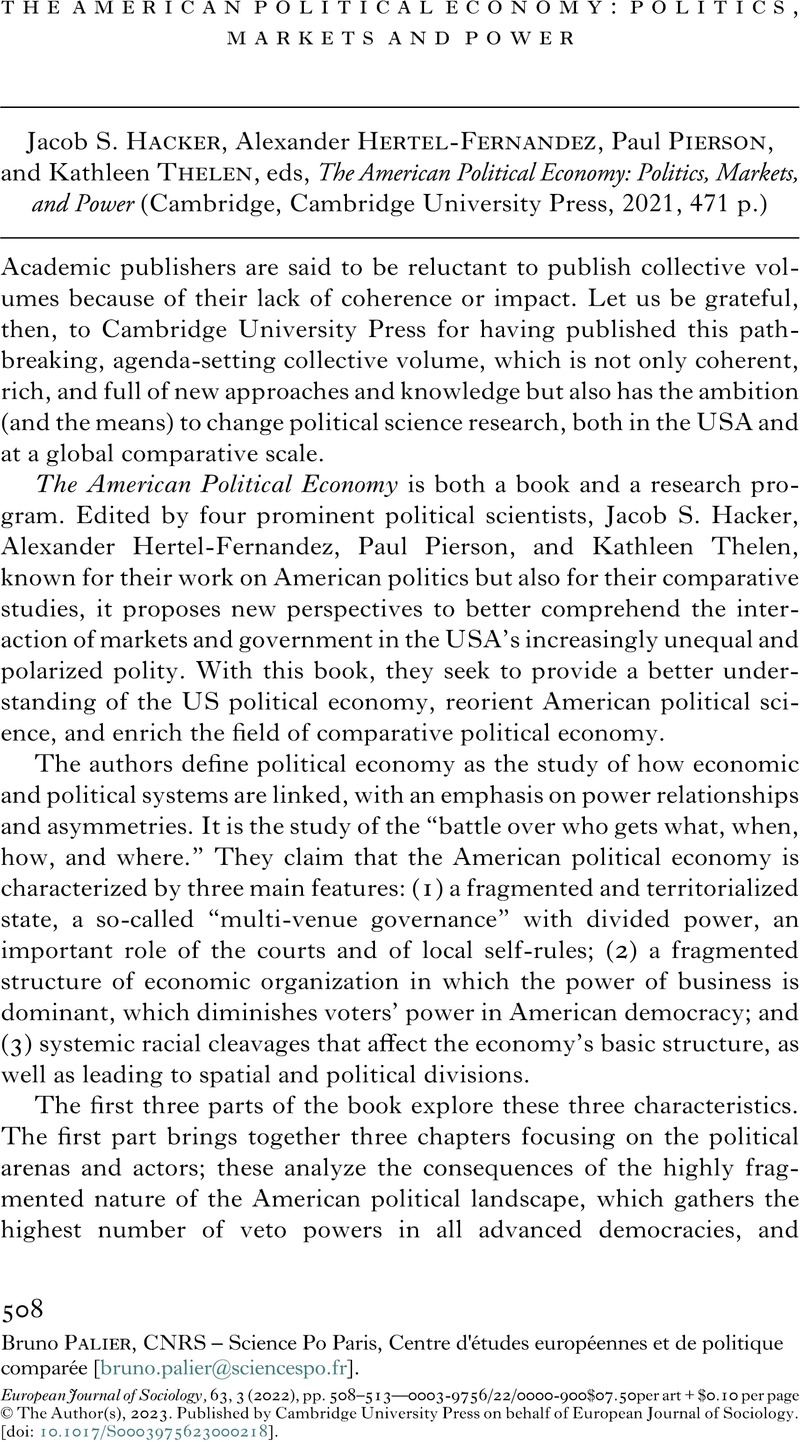No CrossRef data available.
Published online by Cambridge University Press: 19 April 2023

1 Peter. A. Hall and David Soskice, 2001. Varieties of Capitalism. The Institutional Foundations of Comparative Advantage (Oxford, Oxford University Press).
2 Lucio Baccaro et Jonas Pontusson, 2016. Rethinking Comparative Political Economy: the Growth Model Perspective, Politics & society, 44 (2): 175-207.
3 Pablo Beramendi, Silja Häusermann, Herbert Kitschelt and Hans-Peter Kriesi, eds, 2015. The politics of advanced capitalism (Cambridge, Cambridge University Press).
4 Torben Iversen and David Soskice, 2019. Democracy and prosperity: Reinventing Capitalism through a Turbulent Century (Princeton, Princeton University Press).
5 Kathleen Thelen and Wolfgang Streeck, eds, 2005. Beyond continuity: Institutional change in advanced political economies (Oxford, Oxford University Press).